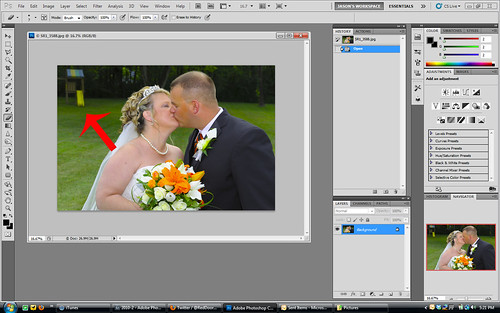
Hey Gang! Glad to see you're back. I'm not entirely sure what the image above has to do with high ISO and low noise... It was shot with a D300 in studio conditions at ISO200. I wanted to share this shot with you all though. It's my friend Heather, who after a horrific traffic accident used Yoga to regain mobility. She's an inspiration to anyone who has to overcome an obstacle.
On to some high ISO low noise goodness! I had a friend on twitter(by the way if you're not following on twitter, why not? it's @reddoorphoto)ask me about the noise capabilities of the D700 because he was considering buying a new camera and wanted better noise reduction/capabilities. I asked him if he had thought about a D300s instead. At half the price, it comes really close to the quality of the D700 in the noise department, plus it shoots video! To prove this to him I set out to do a little experiment... More on that after the jump:
We had an engagement session last night, so I took the opportunity to grab Shad's D300s and his D700 and do a quick, unscientific test. Same lens, same ISO(3200)spot metered off of the guys back in the shadows. Take a look at the results:

To view it larger click HERE
The D700 is on the left, D300s on the right. I Spot metered for the back of his shirt that was in the shadows, so the background is blown, but that's ok. You can see the noise(what little there is) on the zoomed in section. I think the D300s file looks as good, or better than the D700 file. I'm pretty sure that both are perfectly acceptable. Is there a $1300 difference between the D300s and the D700? I don't think so. Unless you need the full frame for an ultra wide lens like the Sigma 10-24 FX, I can't see a justification to go with the D700 instead of the D300s. This was of course a real world test, not a scientific laboratory test, but the proof is in the image above. What do you think? Let me know in the comments below.
Thanks for stopping by, see you next time! Jason
Read more on this article...









